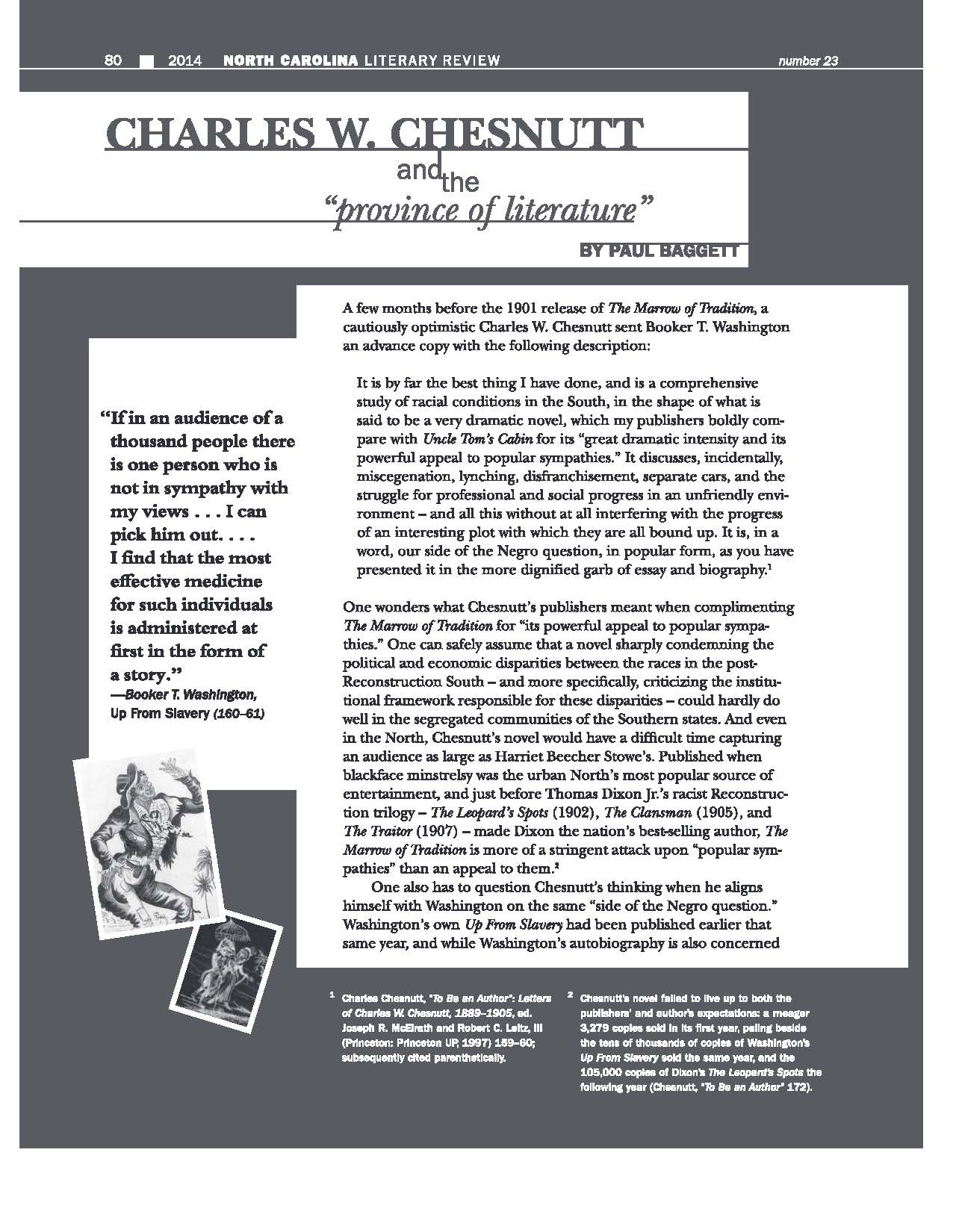Friday from the Archives: “Charles W. Chesnutt and the “province of literature”” by Paul Baggett from NCLR 23 (2014).
Going back a decade and revisiting our 2014 issue. Baggett’s literary criticism of Chesnutt’s formative novel, The Marrow of Tradition, once again underlines the fact that the more things change, the more they stay the same. He writes, “This essay turns to The Marrow of Tradition to explore more fully what Chesnutt refers to as the “province of literature,” which Chesnutt felt was distinct from other forms of public discourse seeking to
improve race relations. More specifically, I examine this notion of inserting politically unpopular content into the “popular form” of a story.”
Chesnutt’s novel, written in 1901, sounds very similar to the 2001 novel Erasure by Percival Everett (adapted in 2023 as the film “American Fiction”). In both novels, the authors,
“recognized the delicate nature of his mission, that if he wished to raise the consciousness of his predominantly white readers, he could most efficiently achieve this by employing and (exploiting) the very forms most familiar to them. Chesnutt thus inserts stock characters ranging from comical “darkies” to Southern white gentlemen, all speaking in recognizable dialects. In addition, he includes sources of popular entertainment, from a cakewalk performance to the more gruesome and provocative example of white amusement, spectacle lynching. Incorporating the very forms of entertainment that white culture regularly produced and consumed, Chesnutt not only shows how racism and violence are attached to these images and performances, but goes further in exposing how racism and violence were essential to their aesthetic appeal.”
Baggett wrote, “While Chesnutt still maintains that literature might enact social change through “imperceptible” means, he demonstrates in The Marrow of Tradition that literature’s sphere of influence had to compete with a range of more powerful cultural forces than literary representation. From popular entertainment to daily newspaper editorials, African Americans were more often the subject of derision or amusement than of sympathy or respect. The result of this is a novel that, while generally reflective of the worsening race relations in the South, more specifically comments on the central role of aesthetics in the creation and maintenance of these conditions.” Important stories raising up the lived experiences of BIPOC Americans which win the Pulitzer prize or are selected for Oprah’s bookclub or turned into Oscar-nominated films still are overshadowed by the amount of spending on fear-mongering by white supremacists. Fortunately, those writing and advocating for freedom continue to do so.
Read the entire essay at ProQuest and order the issue for your collection.
